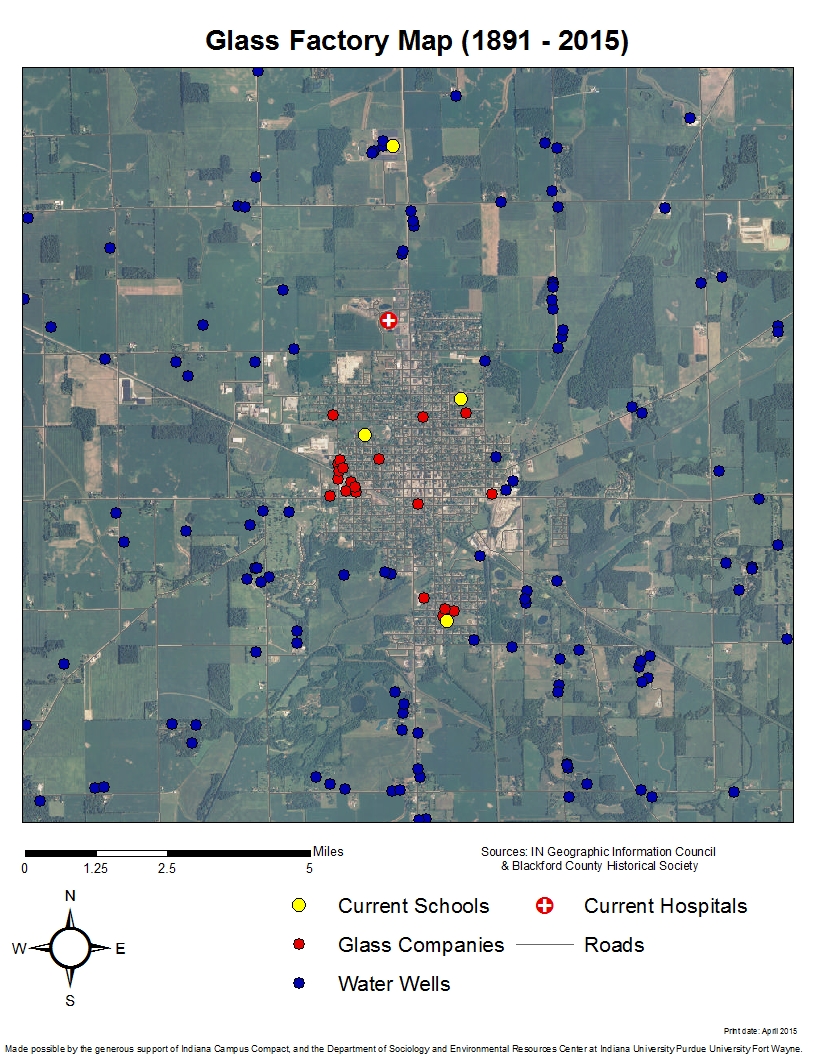This is a special edition of our newsletter. We have been receiving requests from residents about what we found when we tested soil in the area surrounding the former location of Southside Glass, aka the baseball field. It is our understanding that there have been some discussions about developing the property.
The Research Team has issued this information about the area of concern:
We took a total of 9 samples from the area marked area 14. This area included, but was not limited to, the area immediately surrounding the property of concern. Please understand that not all 9 of these samples are immediately surrounding the property. Some were located a bit further away, which will have affected the averages.
Here is the science from our soil study:
| Soil metal | Geometric mean | Range | IDEM long-term, residential screening level | N (%) above screening level |
| Arsenic, ppm | 14.6 | 6.9, 47.7 | 10* | 7 (77.7%) |
| Total chromium, ppm | 28.2 | 8.3, 69.4 | — | — |
| Copper, ppm | 29.6 | 11.6, 48.5 | 400 | 0 (0) |
| Lead, ppm | 52.1 | 10.9, 115.9 | 200 | 0 (0) |
| Manganese, ppm | 388.5 | 143, 938 | 3000 | 0 (0) |
* We measured total arsenic; however, screening level is for inorganic arsenic. Also note that the commercial screening level is 30 ppm; only 11.1% of samples were above 30 ppm.
Notes: mg/kg = ppm
Link to IDEM tables: https://www.in.gov/idem/cleanups/resources/technical-guidance-for-cleanups/idem-screening-and-closure-level-tables/
Arsenic levels were based on inorganic arsenic, but we measured total arsenic, so that’s a source of imprecision. The other issue is what value to use as a comparison. If we use the long-term residential standard (10 ppm), 77.7% of the 9 samples (i.e., 7) were above the recommended limit. If we use the long-term commercial standard (30 ppm), 11.1% of the 9 samples (i.e., one sample) was above the recommended limit.
Arsenic soil levels in this area were significantly higher than in other parts of town (but not by a large amount, the overall geometric mean was about 11 ppm vs. 14 ppm. in this area).
The Research Team
What Does This Suggest?
First of all, our findings alone do not suggest that this site would qualify as a Brownfield for redevelopment funds. But then again, we only took a few samples. More information is needed. Arsenic, in general, is an EPA concern because long-term exposure to elevated arsenic does increase the risk of cancer. According to a 1999 study by the National Academy of Sciences, arsenic can cause bladder, lung, and skin cancer and may cause kidney and liver cancer. But that is long-term exposure to high levels – of healthy adults. That said, at minimum, before any development project that is intended to include children or other vulnerable populations moves forward, an Environmental Site Assessment (Phase I and Phase II) would be highly recommended.
There are many properties in Hartford City that do not have a Phase I history suggestive of legacy pollution that are available for development. The site of concern once hosted the largest glass factory in the entire United States, and the types of pollutants left behind from glass factories does not break down in the environment over time. This is why exposures in the Glass Manufacturing Industry have been noteworthy. It is reasonable and fair to question the wisdom of moving forward quickly without first pausing to do diligence and consider possible alternative options in the community.
Sherrie M. Steiner
Associate Professor of Sociology
Purdue University Fort Wayne

